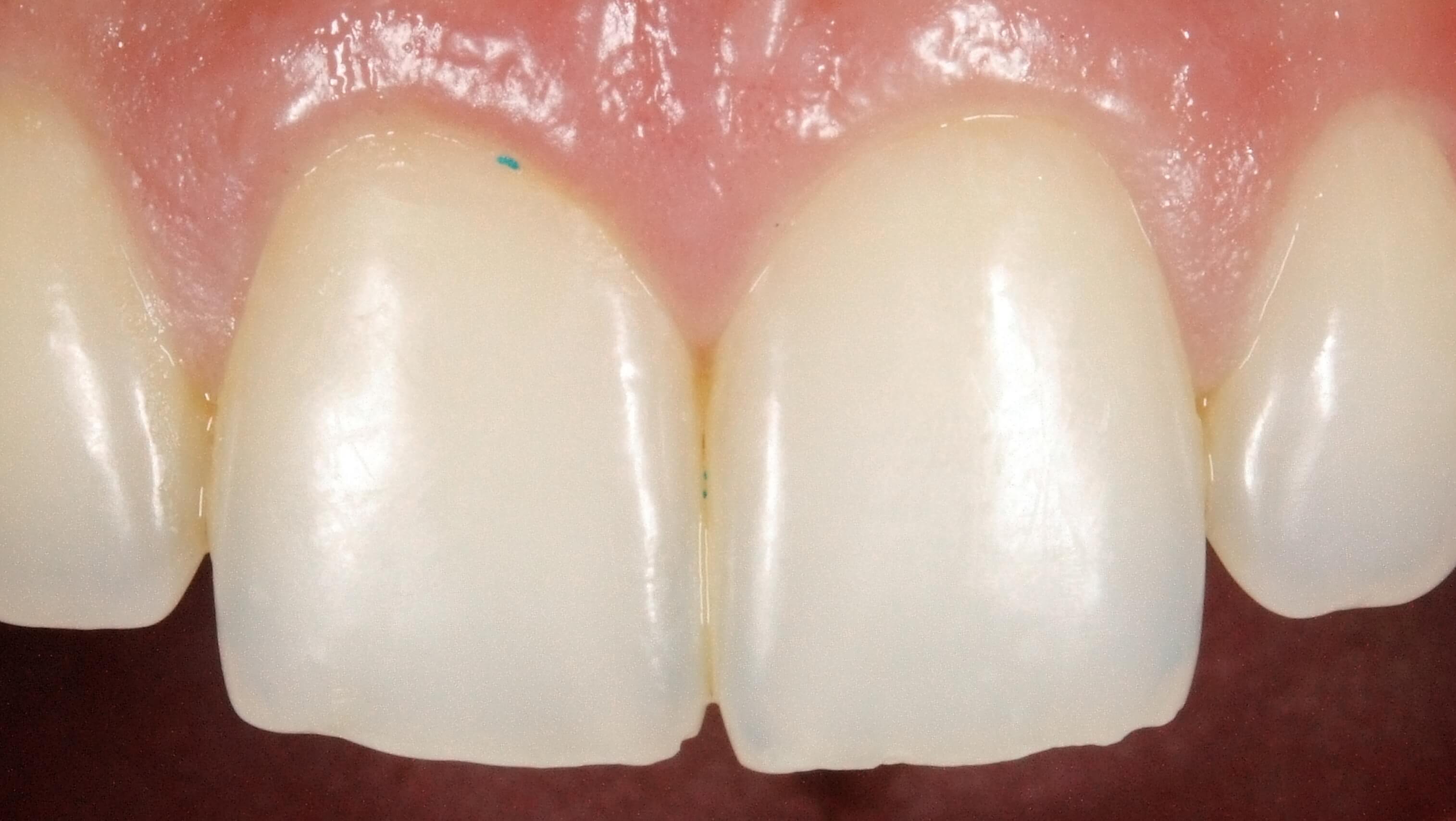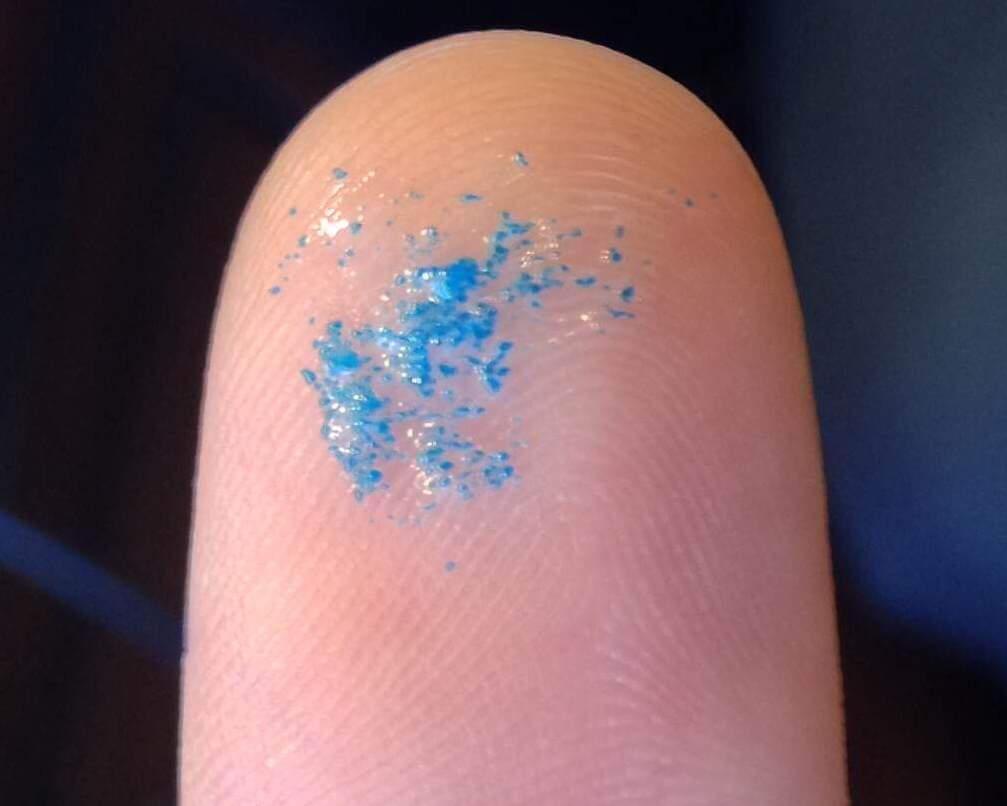A lot of patients, friends, and colleagues have been asking us about plastic microbeads in toothpaste.
Although there is no peer-reviewed research that measures the effects microplastics in toothpaste have on human health, microbeads are approved by the FDA and are in many products you wouldn’t expect including toothpaste, chewing gum, and face wash.
Many people are unclear what microbeads are, and the role of microbeads in various products is not supported by beauty and healthcare experts. Additionally, ecological and environmental controversy surrounding microbeads is emerging rapidly.

What Are Microbeads?
Microbeads, also known as microspheres, are tiny plastic beads smaller than 5mm and typically made of polyethylene plastic (Fendall & Sewell 2009). The ones usually found in toothpaste and face wash are even smaller (less than 1mm).
Plastic microbeads are used for aesthetic purposes in toothpastes and chewing gum, making them look more appealing and appetizing to consumers.
In face wash, microbeads are used as exfoliators, replacing natural alternatives such as oatmeal or rice. Plastic microbeads began to replace these natural ingredients in cosmetic products in the 90s when microbeads were realized as a more cost-effective alternative (Cole, Lindeque, Halsband, & Galloway 2011).
Professional Opinions on Microbeads
Experts agree, the role of Microbeads is both unnecessary and potentially harmful to both consumers and the environment:
The buildup of microbeads embedded in patients’ gums has been increasingly apparent. This is very concerning because any foreign objects lodged in the gumline could lead to gingival inflammation and lead to infection, gingivitis, or periodontal disease. For this reason, and the fact that microplastics are a known pollutant to the environment, we recommend to use toothpastes that do not contain microbeads.”
Dr. Kyle Stanley
While little is known for certain, it is clear that microbeads are unnecessary for an effective toothpaste product. Alternatives are equally, if not more effective, than microbeads for their purpose as a mild abrasive to remove plaque and leave teeth clean.”
Dr. Matt Nejad
Poorly made skincare products containing plastic beads for exfoliation are not only harmful and dangerous to our bodies, but to the environment as well. We recommend using products made with natural ingredients such as jojoba or oatmeal instead. Organic ingredients like those are not only beneficial to your skin, but also pose no risk if ingested or end up in large bodies of water with sea life.”
Beverly Hills Skincare Expert, Gina Mari
Ecological& Environmental Concerns with Microbeads
Perhaps one of the most important concerns regarding plastic microbeads is the effects they have on ecosystems and the environment.
Plastic has long been recognized as a pollutant, but we are just recently realizing that microplastics in products we use daily have the same detrimental effect on the environment (Cole, Lindeque, Halsband, & Galloway 2011).
According to The Marine Pollution Bulletin (2011), microbeads from cosmetic products are making their way from our sinks into rivers and lakes, which are then being mistaken for food by small animals. This poses a huge threat to their health and ecosystem. By consuming microbeads, small fish and animals face the risk of digestive blockage and starvation (Fendall & Sewell 2009).
Bringing an end to Microbeads
No matter what they’re called (microplastics, microbeads or microspheres), there is no advantage to using microbeads in toothpastes or cosmetic products. Although deemed safe for human use by the FDA, the environmental hazards combined with the potential personal health risks greatly outweigh any benefit that they present. Therefore, dental and beauty experts recommend using toothpaste and other cosmetics that do not contain microplastics.
The good news is, progress is already being made. Illinois has officially banned microbeads in all cosmetic products and Proctor and Gamble (makers of Crest) has announced that they will be microbead free by 2017. Hopefully this will set a precedent for other states and companies to follow.

Toothpastes Containing Microbeads (Bad)
Toothpastes NOT Containing Microbeads (Good)
Resources for Microbeads & the Environment:
- Fendall, Lisa S.& Sewell, Mary A.; (2009). Mary A., Contributing to marine pollution by washing your face: Microplastics in facial cleansers. Marine Pollution Bulletin, 58; 1225-1228.
- Cole, M., Lindeque, P., Halsband, C., & Galloway, T.; (2011). MIcroplastics as contaminants in the marine environment: A review. Marine Pollution Bulletin, 62; 2588-2597.




Oops spelled my name wrong the first time.
What toothpaste do you recommend?
There is no concrete evidence that one brand is more effective an another so basically the major things to consider/compare when selecting a toothpaste are: quality of ingredients (or what ingredients), abrasiveness, and personal preference.
These have been popular choices that we like: Crest Pro Health (the new microbead free formula), Marvis, Ultradent whitening toothpaste, Arm & Hammer. Hope that helps.